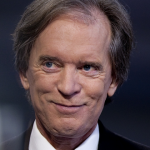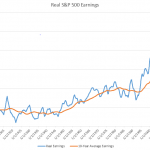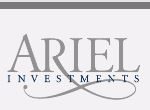“The past is never dead. It’s not even past.”
William Faulkner
I recently had coffee with one of my former colleagues in the investment management world. He asked me if our readers understood that, in the world of mutual fund managements, it was all about assets under management and profitability to the various stakeholders in the business. Thoughts about the returns for the investor were generally secondary, or put differently, whether the investors actually got any yachts (or vacations in the Caribbean or second homes on Hilton Head Island) did not matter. Having recently reviewed some posts on our Bulletin Board, I told him that no, many of our readers were still operating under the belief that there was, somewhere in that room full of manure, a pony.
Our desire for hope and change (at least in terms of investment returns) often leads us to ignore the evidence of simple mathematics working against us. I have been as guilty of this as anyone. How else to explain a continued investment in the Sequoia Fund which, based on Morningstar’s reported numbers as of 7/29/2016, gave me a 744 basis point annualized return for five years while charging me 100 basis points a year as expenses. So the expense ratio as a percentage of returns was 13.4%.
Had I been as smart as I thought I was, I would have listened to those who suggested putting money into the Vanguard Dividend Growth Fund,. For a similar five-year period charged 33 basis points a year in expenses and had an annualized return of 1332 basis points. This translates to expenses as a percentage of returns per year on the order of 2.5%.
The numbers become more instructive when you look at a category where active management actually should add value, given market inefficiencies. Namely, that is the area of global funds.
Let’s look at six global funds with those five year records through 7/29/2016:
| expenses | annualized returns | exp/annualized returns | |
| Artisan Global Value | 128 bp | 1031 bp | 12.4% |
| Dodge & Cox Global | 63 bp | 814 bp | 7.7% |
| Oakmark Global Select | 113 bp | 899 bp | 12.6% |
| Polaris Global Value | 99 bp | 990 bp | 10.0% |
| T Rowe Price Global | 89 bp | 981 bp | 9.1% |
| Vanguard Global Equity | 57 bp | 784 bp | 7.3% |
Some comments are appropriate. By way of disclosure, my wife has had an IRA account with Polaris for more than ten years. That is a function of a portfolio that does not look like other portfolios, with extremely low turnover, and a manager in Bernie Horn who learned his craft while in the same office space as the legendary Hakan Castegren (Harbor International) when Castegren had his office in Boston before relocating to Bermuda. Dodge & Cox is extremely reasonable in terms of fees and returns. It should do better, as it has a strong research department whose analysts do real independent research. If the organization has a flaw, it is that they let their funds get too large before closing them, and end up diluting their investor returns (you either buy more of the same stock at less undervalued prices or you expand the portfolio with ideas that are increasingly not the best ideas). Vanguard’s Global Equity Fund is the sub-par performer with lowest expenses but the least attractive performance. That is a function of Vanguard’s tendency to shoot itself in the foot.
When Vanguard Global was launched, it had one fund management firm – Marathon out of London. The performance was superb, as one might expect, since Marathon is one of the best global and international managers out there (and I say that because I sit on an endowment investment committee that has them managing an international account, so I see their long-term returns) When assets ballooned, Vanguard closed Global Equity. It subsequently reopened it, but with three management firms, diluting both accountability and performance. While Vanguard seems to believe its own pr about multi-manager teams on its active-managed funds, benefits seem to accrue more to growth in assets under management than in investor returns. We will have an opportunity to see how this might have played out. Harbor has retained Marathon to be sole manager of a new international fund, the Harbor Diversified International All-Cap Fund, whose institutional shares have an 85 bp expense ratio (after reimbursements).
I suggest investors think about what is important to them. I agree with David that global funds are not favored by investment consultants and asset allocators (you are cutting into the possible number of recommendations and potential fees). For many investors, all-in, they end up being a better choice than having multiple international and domestic funds. Alternatively, they can prove to be as much if not more expensive than having a domestic fund and an international fund in its place. Global would seem to be one of those areas where the higher fees of active management over indexation can be justified.
But you have to know what you are getting. If 20 or 30 bp a year are being skimmed off the top by a parent for its distribution platform, well …… And if the lead manager is taking 100 days off a year, spending his or her time on a not-for-profit board, or refuses to do any travel but for marketing purposes, then you may be better served elsewhere.
What Goes On In Las Vegas, Stays In Las Vegas
One of the reasons I have showed a bias towards passive management in recent years, aside from the lower fees impact on compounding of investment returns, has been the difficulty of knowing where the value-added came or comes from in active management. Is it the portfolio manager(s)or the investment analysts or both?. Of the many funds his name was on at PIMCO as portfolio manager, what was Bill Gross really doing in each of them on a daily basis that contributed to the returns? When is a portfolio manager named on a fund just as window dressing to make the trustees think there is succession planning and sustainability? I am thinking of another situation where a young, extraordinarily articulate analyst allegedly convinced his colleagues that the Affordable Care Act was going to be a disaster, the extent of which was unknowable, for the broad health care industry. As a result of his arguments, the firm apparently pared its exposures substantially in pharmaceuticals and medical technology, missing one of the great merger and acquisition booms of the last five years.
The point here is that internally and externally, we do not live in a static world. Peter Lynch, for the point in time he was running his fund, achieved extraordinary returns for his investors. If Peter Lynch returned to run a 1940’s Act mutual fund today, should we expect that he would be able to achieve the same kind of performance? Probably that would not be the case. For one, the investable universe that he had then, and the one he would find himself with today are very different animals. Two, the competitors he would have and the resources available to them would also be very different. Three, the time horizons and patience of the retail investor is very different than it was back then. In many respects, his investors were very loyal (helped by a 3% load), so his capital was if not permanent, pretty close to it. Today, Buffett has permanent capital (and a competitive advantage) but most 1940’s Act mutual funds definitively do not.
This question fascinates me – would they come back today? If so, why? If not, why not? Over the next several months, I am going to endeavor to track down some former well-known fund managers, and ask them why or if, when presented with an opportunity, they have elected NOT to return to this side of the business to run a fund again.
Outside the Box
This weekend in Barron’s on page 30, James Grant of Grant’s Interest Rate Observer is interviewed. I have been a reader of Grant’s for more than twenty-five years. And when wherever I have been working did not subscribe, I either talked them into subscribing or purchased my own subscription out of my own pocket. While I do not agree with everything said or the views of everyone interviewed, it is a publication that does not reflect consensus views or thinking. And I should say, given my own pessimistic views of the world, humanity, and motivation, Jim Grant makes me look a raving optimist. I commend the interview to you, not necessarily for what it says but for raising questions which are worthy of discussion. They are questions which you certainly won’t hear being talked about by either party in the current political climate. Particularly chilling is his reference to the Ph.D standard, where former tenured economics faculty members try things out on the real economy because they were good theoretical blackboard ideas. Apropos of which, we have “Helicopter” Ben Bernanke, jetting and boating his consulting practice around the world now that the Federal Reserve is in the hands of Janet Yellin. After reading the interview, one is left wondering, to paraphrase Churchill, whether we are at “the end of the beginning or the beginning of the end.” In any event, read the article and keep in mind the dangers inherent in making leveraged investments that try to create something out of nothing.
Lingering Questions
Last month, I raised the question of how much it costs a fund company to be on a no-transaction fee platform with a discount broker. The old answer is 40 basis points. And if you think it is the fund investment management companies that are solely bearing that cost, I have some beachfront property in the hurricane zone in Florida for you, complete with alligators. The new answer is 10 basis points, but then a lot of other costs and expenses become non-transparent, buried in custodial and transaction fees of varying amounts. If you want a real eye-opener, go sometime to the Prospectus or Statement of Additional Information, where fund ownership of large owners is disclosed. For many funds you will see that it is through Schwab, Fidelity, TD Ameritrade, etc., that 80 to 90 per cent of the ownership of a fund is held. Rarely does direct ownership of a fund through the fund company count for a majority of its ownership positions. Hmmmm. What happens when the economics of distribution change? That is a little bit like the question as to what the value of an ounce of gold becomes if rather than as a passive store of value, it starts being used as a medium of exchange to settle transactions.
By:
Edward Studzinski











